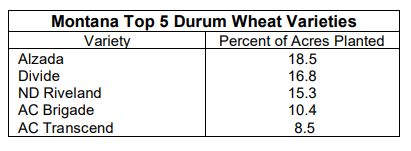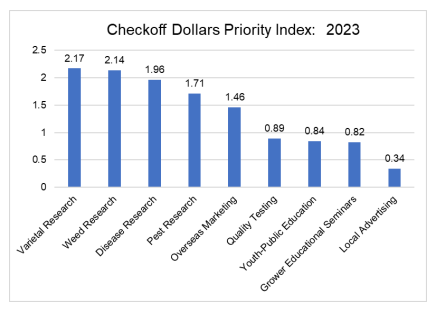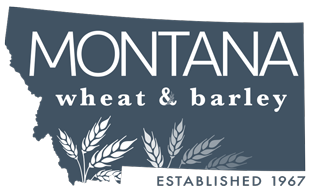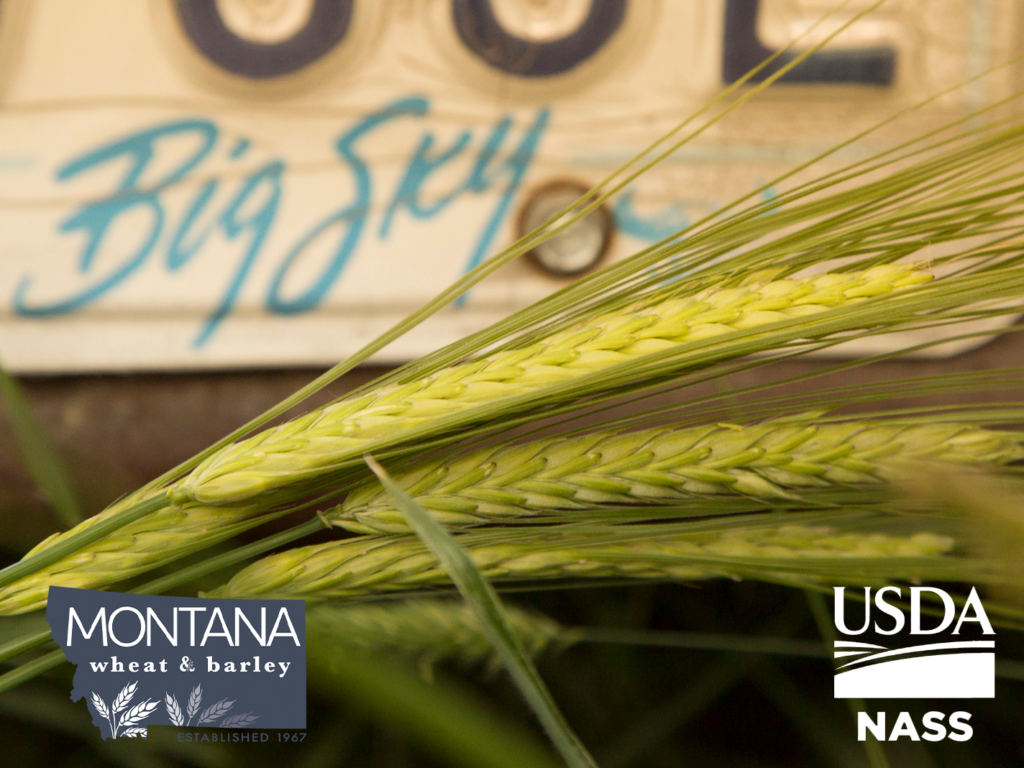The 2023 Wheat and Barley Variety Survey report was released yesterday by the USDA National Agricultural Statistics Service (NASS) Mountain Regional Office. Funded by the Montana Wheat & Barley Committee (MWBC), this survey generates vital information to assist breeding programs around the state and beyond select varieties for seeding with the goal of increasing farm profitability.
“In the Treasure State, one of the most impactful bottom-line decisions a wheat and barley farmer can make is varietal selection. There are hundreds of choices, each adapted for specific purposes and environments. Farmers will use various methods to select a variety based on performance data, agronomists, and seed dealers. The goal of this survey is to help uncover the reasoning behind a varietal selection, and to provide valuable feedback to the industry,” said Sam Anderson, Market Development Director at the Montana Wheat & Barley Committee.
In collaboration with the National Agricultural Statistics Service (NASS) funded by the Montana Wheat & Barley Committee (MWBC), over 2,940 farmers responded to the survey and the results can be seen here:
2023 Montana Wheat & Barley Top Varieties
Vida is once again the leading spring wheat variety in Montana for 2023. Vida accounts for 22.5 percent of the 2.80 million acres of spring wheat planted in 2023. Reeder ranks second with 11.7 percent of the spring wheat acreage. Dagmar represents 9.0 percent of the spring wheat planted and ranks third. SY Longmire ranked fourth, with 8.8 percent of spring wheat planted. Lanning accounts for 4.4 percent of the spring wheat acres and ranks fifth. These top five varieties account for 56.4 percent of the spring wheat planted in 2023. Montana continues to rank second in spring wheat acreage in the United States, with 24.7 percent of the spring wheat planted in 2023.
Warhorse is once again the leading winter wheat variety planted in Montana for 2023. Warhorse accounts for 18.7 percent of the 1.9 million acres of winter wheat planted. Bobcat accounts for 15.7 percent of winter wheat planted and ranks second. Keldin ranks third, with 11.4 percent of winter wheat acres planted. Yellowstone ranks fourth and represents 8.7 percent of acres planted. Brawl CL Plus ranks fifth with 4.9 percent of acres. These five varieties account for 59.4 percent of the winter wheat planted for 2023. Montana ranks fifth in winter wheat planted acreage in the United States with 5.2 percent of the 36.8 million acres planted.
Alzada is the leading Durum wheat variety in Montana during 2023. Alzada accounts for 18.5 percent of the 650,000 acres planted. Divide ranks second with 16.8 percent of the Durum wheat acres planted. ND Riveland ranks third with 15.3 percent of the Durum wheat acres planted. Brigade represents 10.4 percent of the Durum wheat and ranks fourth. Transcend accounts for 8.5 percent of Durum wheat and ranks fifth. These top varieties account for 69.5 percent of the Durum wheat acreage in Montana for 2023. Montana continues to rank second in Durum wheat planted acreage in the United States with 35.3 percent of the nation’s estimated 1.48 million acres planted in 2023.
AC Metcalfe is once again the leading barley variety in Montana for 2023. AC Metcalfe accounts for 25.5 percent of the 1,200,000 acres planted in 2023. Hockett ranks second with 17.2 percent of the barley acreage. Bill Coors 100 represents 7.3 percent of the barley planted and ranks third. Haxby ranks fourth, with 6.7 percent of barley planted. Conlon accounts for 5.7 percent of the barley acres and ranks fifth. These top five varieties account for 62.4 percent of the barley planted in 2023.




Trait Index
Wheat growers were asked to rank traits in order of importance when choosing a wheat variety for 2023, where 5.00 is the highest and 1.00 is the lowest.
Sawfly resistance was the highest ranked trait of importance when choosing a spring wheat variety, garnering an average of 2.50 points out of 5.00. Drought tolerance was second, with an average of 1.64 points. Test weight was the third most important trait, averaging 1.50 points. Other was in fourth place, with an average of 1.12 points. End use qualities was the fifth-ranked trait, at 0.92 points. These, and all other traits listed on the survey, are illustrated on the following chart.
Other wheat and barley types can be seen on NASS

Profitability of Operation
Growers of both barley and wheat were asked about their expectations concerning the profitability of their operation over the next twelve months. Farmers who reported the profitability of their operation would be better off was 25.7 percent. No change in the profitability of their operation was expected by 57.2 percent of farmers. Farmers who expected their operation would decline stood at 17.1 percent

Investment of Check-Off Dollars
Lastly, farmers were asked how they would like their check-off dollars invested with 5.00 as the highest, and 1.00 as the lowest choice. Varietal Research was the highest ranked answer, with an average of 2.17 out of 5.00 points. Weed Research was ranked a close second, with 2.14 out of 5.00 points. Disease Research was ranked third most important, with an average of 1.96 points. Pest Research was ranked fourth, averaging 1.71 points, and Overseas Marketing was fifth, at 1.46 points. These, and all answers with rankings, are illustrated in the chart below.

As farmers wrap up harvest this year, the Wheat & Barley Committee and the Montana Department of Agriculture encourage all producers to reach out to extension agents, agronomists, and seed dealers to discuss available options for growing the highest quality grain possible.

